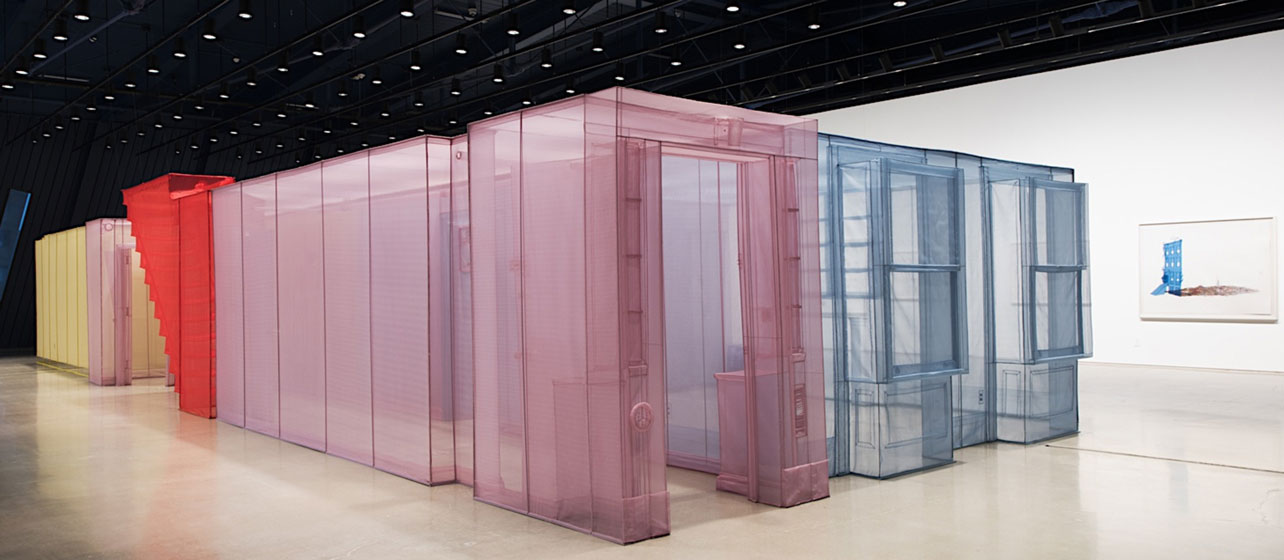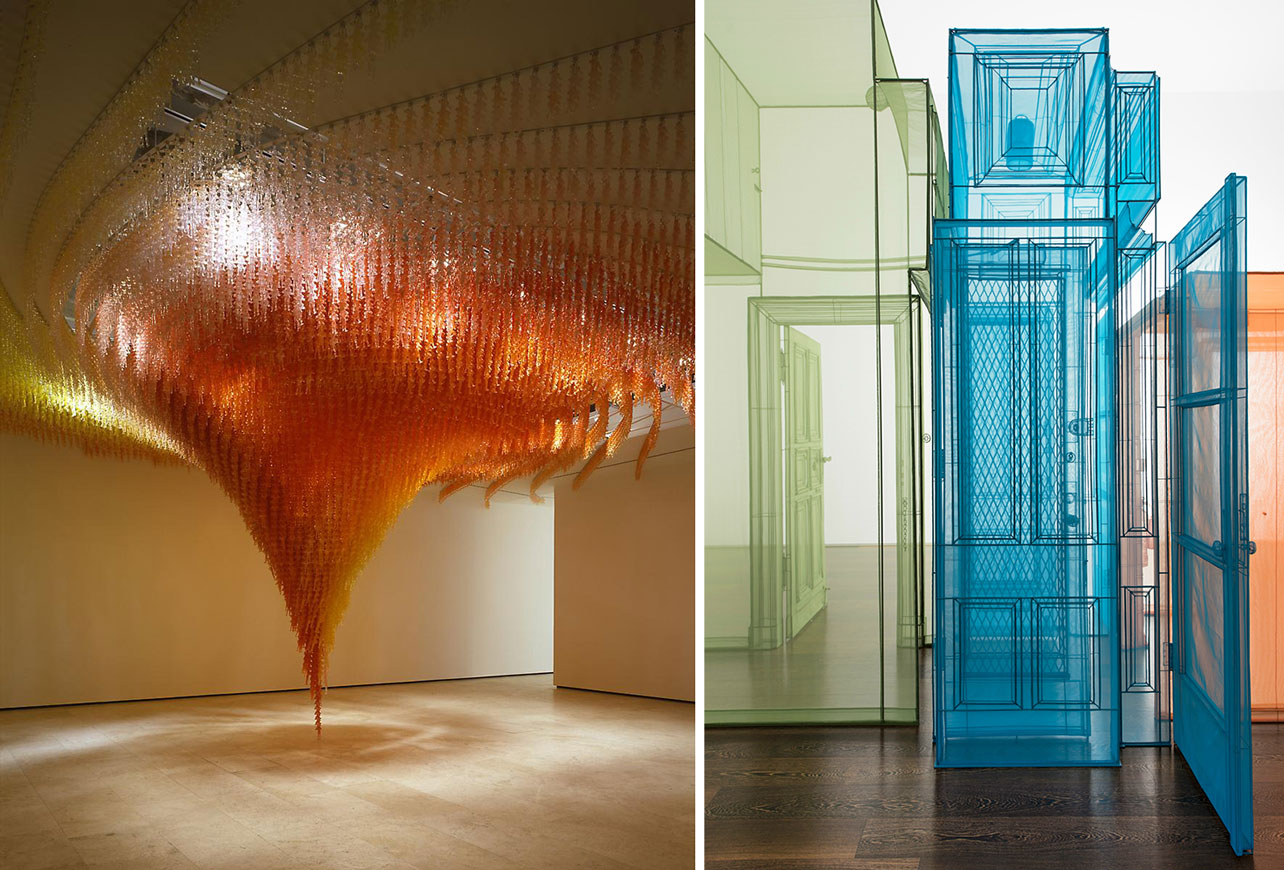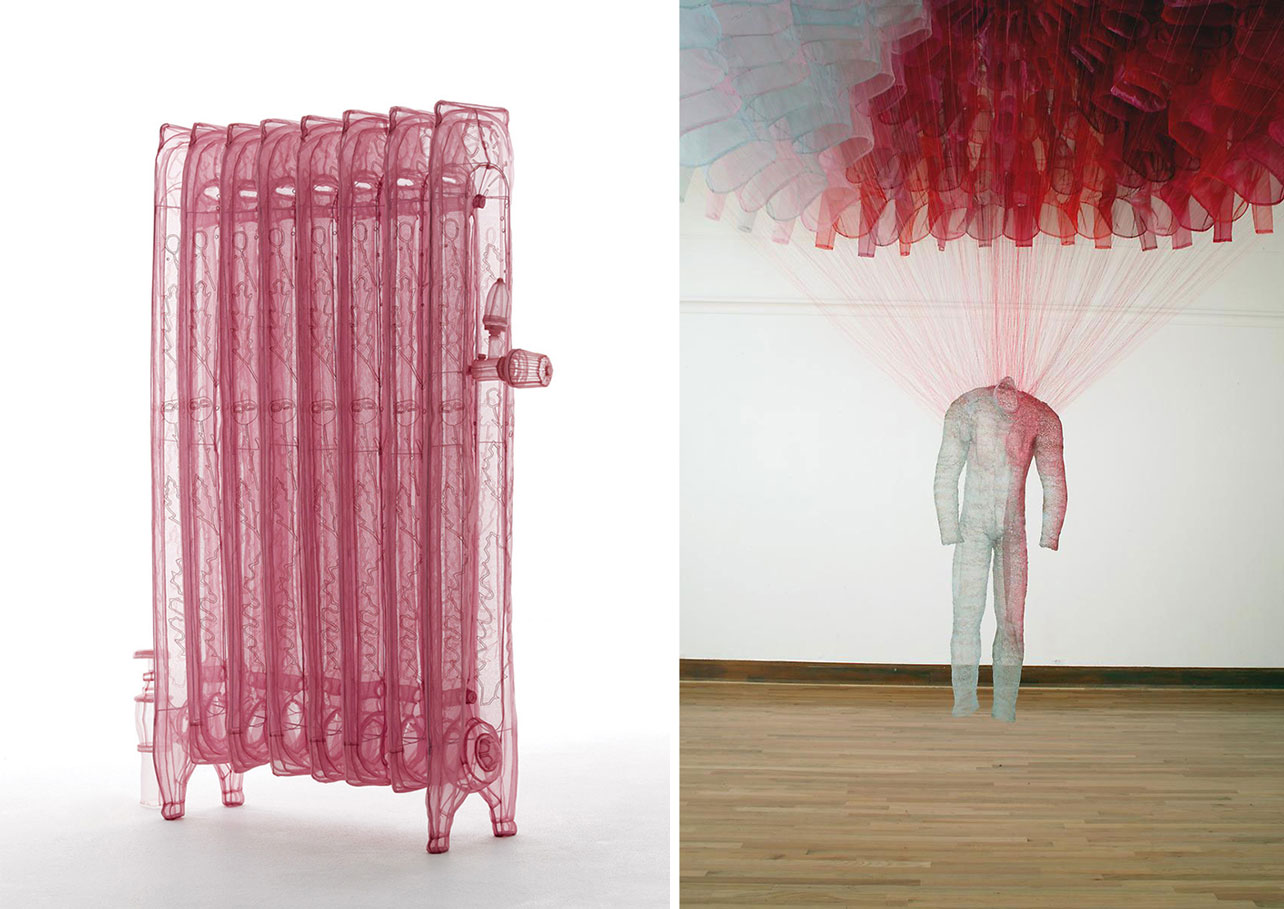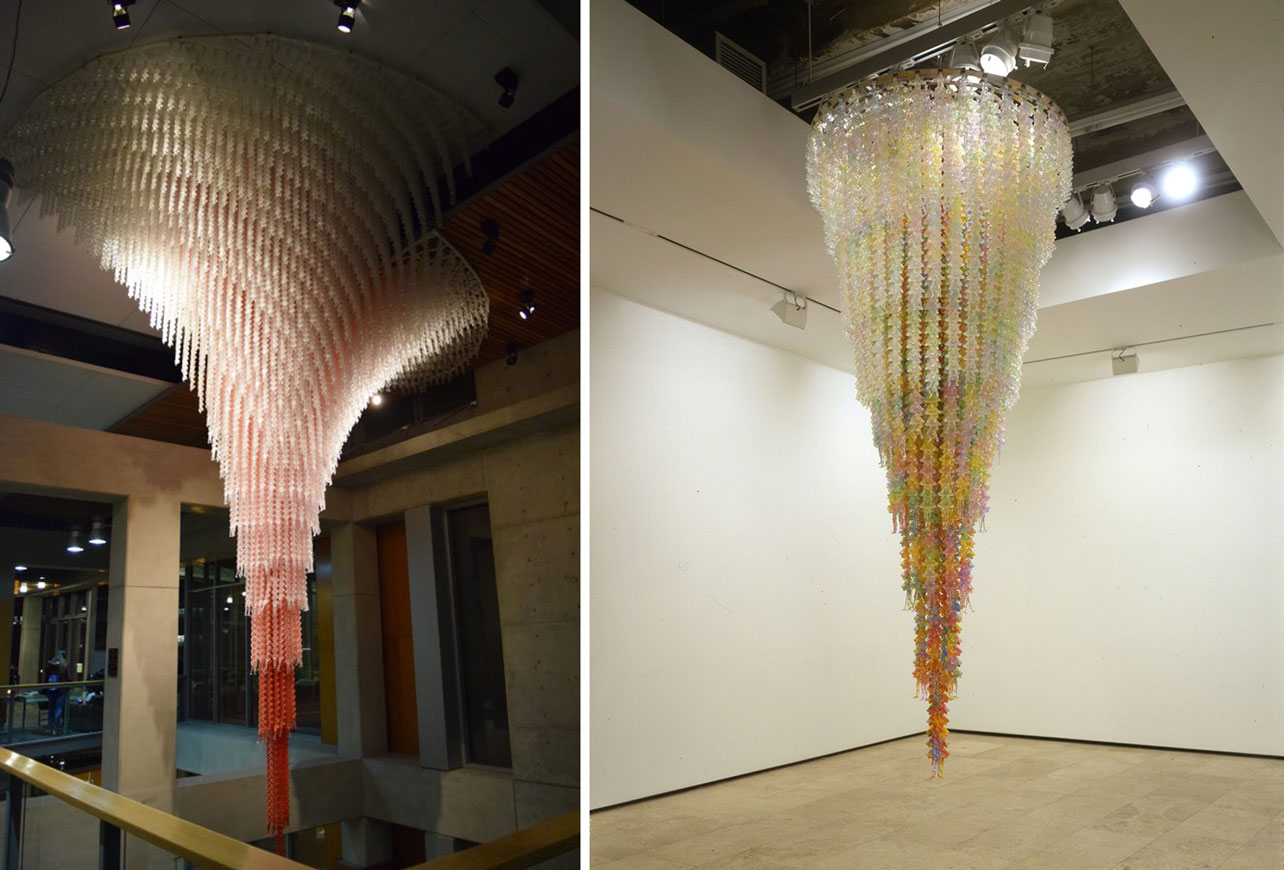ART-TRIBUTE:Weaving and other Practices… Do Ho Suh
 We continue our tribute with Do Ho Suh (1962- ), who works across various media, creating drawings, film, and sculptural works that confront questions of home, physical space, displacement, memory, individuality, and collectivity. Suh is best known for his fabric sculptures that reconstruct to scale his former homes in Korea, Rhode Island, Berlin, London, and New York.
We continue our tribute with Do Ho Suh (1962- ), who works across various media, creating drawings, film, and sculptural works that confront questions of home, physical space, displacement, memory, individuality, and collectivity. Suh is best known for his fabric sculptures that reconstruct to scale his former homes in Korea, Rhode Island, Berlin, London, and New York.
By Efi Michalarou
 Do Ho Suh was born in Seoul, Korea. After earning his BFA and MFA in Oriental Painting from Seoul National University, and fulfilling his term of mandatory service in the South Korean military, Suh relocated to the United States to continue his studies at the Rhode Island School of Design and Yale University. In exquisitely made works, Do Ho Suh explores contemporary arrangements of space and the unstable boundaries of its categorisation along lines of individuality and collectivity, physicality and immateriality, mobility and fixity. The multiplicity of individuality is tested through meditative processes of repetition: whether interlinked along a lattice of fishing nets, amassed into monumental tornado-like forms, absent from ranks of empty uniforms, or present in every yearbook photo taken at the artist’s high school over 60 years, the artist uses the reproduced human figure to explore sensitively, and with spectacular formal effect, the ways in which personal space inherently extends into the collective sphere. It is with the same elegant economy of conceptual means, focusing on simple yet transformative acts of repetition, that Suh treats the complex psychological and physical architectural structures of the concept of ‘home’. In work for which he is widely known, the artist meticulously constructs proportionally exact replicas of dwelling places, architectural features, or household appliances – kitchen sinks, toilets and microwaves – from stitched planes of translucent, colored polyester fabric. Often reflections of places the artist has inhabited, such as his childhood home or Western apartments, these delicately precise, weightless impressions seem to exist between imagination and reality. Suh has spoken of the distinctive openness to the environment of Korean homes; more than repositories of personal memory or nostalgic projections, his works respond to the indistinct boundaries between psychic interior and objective exterior, which make of home an ongoing lived function rather than a physical structure. Constructed much like items of clothing, Suh’s portable modules of space were designed to be packed in his suitcase as he travelled between continents, the artist’s own personal peripatetic history bleeding into the universalised nomadism of a globalised world. Transitory, connecting spaces (corridors, staircases, bridges, gateways) feature often in the artist’s drawings and sculptural installations: rather than borders, Suh is fascinated with the linking spaces through which the body travels between cultures. In this international era, the house is a protective mantle transformed by its arrivals in different contexts: in different works, homes from different stages of the artist’s life nest one inside the other in differently colored swathes of fabric, or come dramatically into collision in painstakingly constructed models. During his career, he has staged international solo exhibitions and site-specific projects in numerous well-known venues, such as the Contemporary Arts Centre in Cincinnati and he represented Korea at the 49th Venice Biennale in 2001.
Do Ho Suh was born in Seoul, Korea. After earning his BFA and MFA in Oriental Painting from Seoul National University, and fulfilling his term of mandatory service in the South Korean military, Suh relocated to the United States to continue his studies at the Rhode Island School of Design and Yale University. In exquisitely made works, Do Ho Suh explores contemporary arrangements of space and the unstable boundaries of its categorisation along lines of individuality and collectivity, physicality and immateriality, mobility and fixity. The multiplicity of individuality is tested through meditative processes of repetition: whether interlinked along a lattice of fishing nets, amassed into monumental tornado-like forms, absent from ranks of empty uniforms, or present in every yearbook photo taken at the artist’s high school over 60 years, the artist uses the reproduced human figure to explore sensitively, and with spectacular formal effect, the ways in which personal space inherently extends into the collective sphere. It is with the same elegant economy of conceptual means, focusing on simple yet transformative acts of repetition, that Suh treats the complex psychological and physical architectural structures of the concept of ‘home’. In work for which he is widely known, the artist meticulously constructs proportionally exact replicas of dwelling places, architectural features, or household appliances – kitchen sinks, toilets and microwaves – from stitched planes of translucent, colored polyester fabric. Often reflections of places the artist has inhabited, such as his childhood home or Western apartments, these delicately precise, weightless impressions seem to exist between imagination and reality. Suh has spoken of the distinctive openness to the environment of Korean homes; more than repositories of personal memory or nostalgic projections, his works respond to the indistinct boundaries between psychic interior and objective exterior, which make of home an ongoing lived function rather than a physical structure. Constructed much like items of clothing, Suh’s portable modules of space were designed to be packed in his suitcase as he travelled between continents, the artist’s own personal peripatetic history bleeding into the universalised nomadism of a globalised world. Transitory, connecting spaces (corridors, staircases, bridges, gateways) feature often in the artist’s drawings and sculptural installations: rather than borders, Suh is fascinated with the linking spaces through which the body travels between cultures. In this international era, the house is a protective mantle transformed by its arrivals in different contexts: in different works, homes from different stages of the artist’s life nest one inside the other in differently colored swathes of fabric, or come dramatically into collision in painstakingly constructed models. During his career, he has staged international solo exhibitions and site-specific projects in numerous well-known venues, such as the Contemporary Arts Centre in Cincinnati and he represented Korea at the 49th Venice Biennale in 2001.










